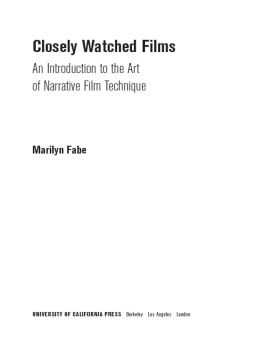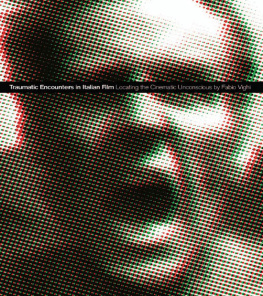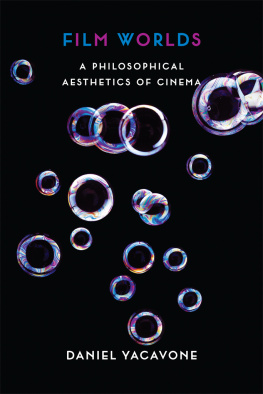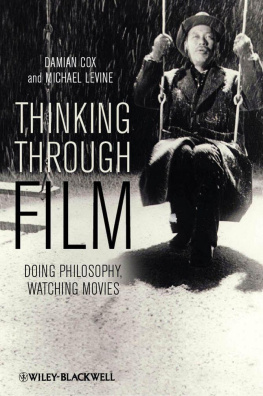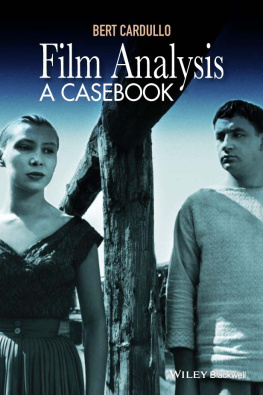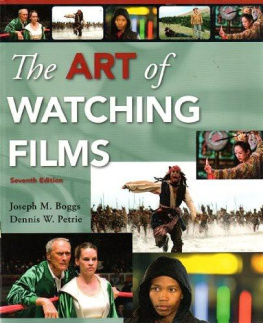Fabe - Closely watched films: an introduction to the art of narrative film technique
Here you can read online Fabe - Closely watched films: an introduction to the art of narrative film technique full text of the book (entire story) in english for free. Download pdf and epub, get meaning, cover and reviews about this ebook. publisher: University of California Press, genre: Non-fiction. Description of the work, (preface) as well as reviews are available. Best literature library LitArk.com created for fans of good reading and offers a wide selection of genres:
Romance novel
Science fiction
Adventure
Detective
Science
History
Home and family
Prose
Art
Politics
Computer
Non-fiction
Religion
Business
Children
Humor
Choose a favorite category and find really read worthwhile books. Enjoy immersion in the world of imagination, feel the emotions of the characters or learn something new for yourself, make an fascinating discovery.
- Book:Closely watched films: an introduction to the art of narrative film technique
- Author:
- Publisher:University of California Press
- Genre:
- Rating:4 / 5
- Favourites:Add to favourites
- Your mark:
- 80
- 1
- 2
- 3
- 4
- 5
Closely watched films: an introduction to the art of narrative film technique: summary, description and annotation
We offer to read an annotation, description, summary or preface (depends on what the author of the book "Closely watched films: an introduction to the art of narrative film technique" wrote himself). If you haven't found the necessary information about the book — write in the comments, we will try to find it.
Fabe: author's other books
Who wrote Closely watched films: an introduction to the art of narrative film technique? Find out the surname, the name of the author of the book and a list of all author's works by series.
Closely watched films: an introduction to the art of narrative film technique — read online for free the complete book (whole text) full work
Below is the text of the book, divided by pages. System saving the place of the last page read, allows you to conveniently read the book "Closely watched films: an introduction to the art of narrative film technique" online for free, without having to search again every time where you left off. Put a bookmark, and you can go to the page where you finished reading at any time.
Font size:
Interval:
Bookmark:

University of California Press
Berkeley and Los Angeles, California
University of California Press, Ltd.
London, England
Portions of chapters have been previously
published in a series of Film Study Extract Booklets,
Macmillan Films Inc., Mount Vernon, N.Y., 1975.
2004 by the Regents of the University of California
Library of Congress Cataloging-in-Publication Data
Fabe, Marilyn.
Closely watched films : an introduction to the art of
narrative film technique / Marilyn Fabe.
p. cm.
Includes bibliographical references and index.
ISBN 0-520-23862-1 (cloth : alk. paper)
ISBN 0-520-23891-5 (pbk. : alk. paper)
1. Motion picturesEvaluation. 2. Motion
picturesAesthetics. 3. Motion pictures.
I. Title.
PN1995.9.E9F17 2004
791.43'015dc22
2004000202
Manufactured in the United States of America
13 12 11 10 09 08 07 06 05 04
10 9 8 7 6 5 4 3 2 1
The paper used in this publication meets the minimum
requirements of ANSI/NISO Z39.481992 (R 1997)
(Permanence of Paper).
For Tom and Daniel
Illustrations
Acknowledgments
First I would like to thank Cass Canfield, Jr., who suggested that I turn my lectures from Film 50, an introductory film course for University of California students and the Berkeley community, into a book. He provided valuable feedback, encouragement, and editorial suggestions. I am also indebted to Edith Kramer, director of the University of California, Berkeley's Pacific Film Archive, and the staff of the Pacific Film Archive Theater for providing the perfect place to teach Film 50. While digital video makes teaching films more convenient, there is nothing like showing an archival 35mm print perfectly projected on a big screen to inspire audiences to appreciate film art. My efforts to expand lecture notes into a book benefited from the help of members of my Berkeley writing group, which over the years has included Elizabeth Abel, Janet Adelman, Gayle Greene, Jodi Halpern, Claire Kahane, Mardi Louisell, Wendy Martin, and Madelon Sprengnether. I also received valuable feedback from the members of the Townsend Center Working Group in Psychobiography, including Jacquelynn Baas, Ramsay Breslin, Liz Cara, Alan Elms, Candace Falk, Lorraine Kahn, Mac Runyan, Reit Samuels, Adrian Walker, and Stephen Walrod.
Madelon Sprengnether was the book's muse. Her kind enthusiasm and brilliant editorial advice kept up my morale and gave me the determination to keep writing. Brenda Webster was a major impetus in convincing me to undertake the project. Margaret Schaefer and Claire Kahane, close friends who date back to my graduate-school days in the English Department at Berkeley, read the book from end to end several times, suggesting ways to make it better, clearer, and more coherent. I am solely responsible for the defects that remain.
I am grateful to the group major in film at Berkeley for giving me the opportunity to teach film since 1976. Working with the bright and challenging film majors at Berkeley nourished my enthusiasm for learning about and teaching film. Conversations with faculty colleagues and graduate students at Berkeley have greatly enriched my perspectives on film and have helped inform my ideas. These include Mark Berger, Seymour Chatman, Carol Clover, Anton Kaes, Russell Merritt, Gabriel Moses, Anne Nesbet, Bill Nestrick, B. Ruby Rich, Mark Sandberg, Kaja Silverman, Maria St. John, and Linda Williams. At the University of California Press, I am grateful to Jim Clark for his enthusiasm about the book, Mari Coates for helping me to get the book ready to launch, Rachel Berchten for guiding it through the production process, and Laura Schattschneider for the intelligence and grace with which she copyedited the manuscript.
My son, Daniel Schmidt, an undergraduate at Berkeley while I was writing Closely Watched Films, was my ideal audience. Daniel provided me with both generous encouragement and astute criticism of various chapters. Finally I would like to thank my husband, Tom Schmidt, who gave me ideas, editorial advice, technological support and much, much more. The book is dedicated to Tom and Daniel.
Introduction
How do films work? How do they tell a story? How do they move us and make us think? This book argues that shot-by-shot analysis is the best way for film students to learn about and appreciate the filmmaker's art. Having taught film studies for many years, I have learned that viewers trained in close analysis of single film sequences are better able to see and appreciate the rich visual and aural complexity of the film medium. Close analysis unlocks the secrets of how film images, combined with sound, can have such a profound effect on our minds and emotions. Through detailed examinations of passages from classic and near-classic films, I hope to provide nonspecialist readers with the analytic tools and background in film theory that will help them see more in every film they watch. As their knowledge of the vast possibilities of the film medium thus increases, so will their enthusiasm for the films they already love.
The book focuses on exemplary works of fourteen film directors whose careers, put together, span the history of the narrative film, beginning with D.W. Griffith and ending with Mike Figgis. Rather than discussing many films in a general way, I discuss a few films in detail, singling out particular sequences from each that either best illustrate what is special or significant about its director's style or help to illuminate a significant theoretical or aesthetic concern. I begin with a study of directors who worked before synchronized sound came to the screen, focusing in chapters ? through 3 on exemplary films by D. W. Griffith, Sergei Eisenstein, F. W. Murnau, and Charles Chaplin. Because silent-era filmmakers did not have the option of using the spoken word to express their ideas, they had to convey their ideas through pictures. As a result, contemporary directors are still inspired by the visual richness and emotional intensity of their films.
Because silent film directors were working with few precedents, their works convey a doing-it-for-the-first-time exuberance and vitality that encourage us to look at film techniques freshly. Just knowing that a certain kind of camera movement, point-of-view shot, or method of juxtaposing two shots was being used in an innovative way helps students to think about and better appreciate the effects of formal elements of film art.
An analysis of one short sequence from Griffith's The Birth of a Nation offers a crash course in the foundations of narrative film art, introducing readers in a clear and precise way to essentially all the basic narrative techniques we see in mainstream films today. I purposefully chose this controversial film to begin this book because its racist content illustrates the way in which narrative film technique is never neutral or innocent: every nuance of a narrative film can convey an ideology. The close analysis of sequences from classic silent films, moreover, makes it possible to clarify and test out theoretical ideas about the medium by prominent film theorists whose ideas are still influential today. An examination of a few sequences in Sergei Eisenstein's The Battleship Potemkin, for instance, illustrates why prominent Soviet film directors believed that editing was the foundation of film art. The analysis of just one shot in Charles Chaplin's The Adventurer provides a vivid and concrete means to introduce students to the French film theorist Andr Bazin's realist aesthetic. A study of the techniques used to create the dream sequence in F. W. Murnau's
Font size:
Interval:
Bookmark:
Similar books «Closely watched films: an introduction to the art of narrative film technique»
Look at similar books to Closely watched films: an introduction to the art of narrative film technique. We have selected literature similar in name and meaning in the hope of providing readers with more options to find new, interesting, not yet read works.
Discussion, reviews of the book Closely watched films: an introduction to the art of narrative film technique and just readers' own opinions. Leave your comments, write what you think about the work, its meaning or the main characters. Specify what exactly you liked and what you didn't like, and why you think so.

